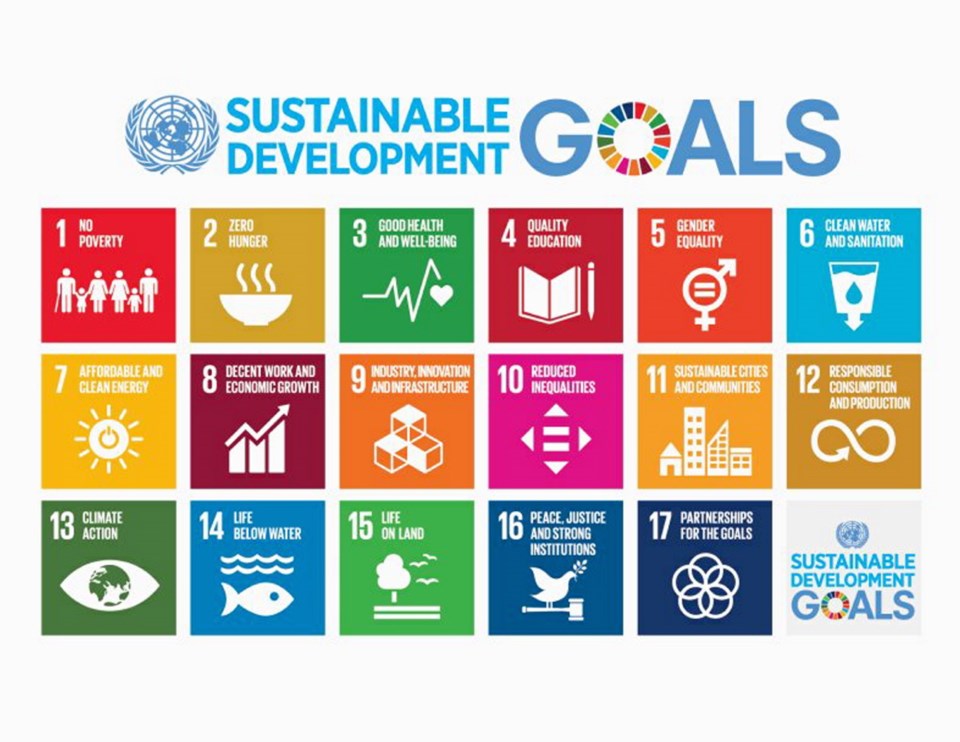I can see it now — lots of furrowed brows: What the heck are SDGs? Well, they are the world’s new sustainable-development goals.
Adopted by all the members of the United Nations in 2015, they are extremely ambitious, to be achieved by 2030 — and Canada, like all the rest of the world’s countries, has signed on. But what exactly have we signed on to, and what does it mean at the local level?
These questions were explored in a recent meeting organized by the Victoria Foundation and the B.C. Council for International Co-operation, which is working to publicize the goals and encourage and support local action based on them. The council estimates there are more than 2,000 groups in B.C. alone working on some aspect of the SDGs, with three-quarters of that effort focused on local, provincial or national work.
I am not going to review all 17 of the goals, never mind the 169 targets; you can find them easily on the internet. But it is important to understand that they are a unit, not a menu; all countries have signed on to deal with all of them, not just the ones they fancy. So I want to highlight both key themes and ambitions and those that might have particular resonance locally.
The first group of goals are about meeting basic needs. Nobody, anywhere, should be living in poverty (Goal 1) or going hungry (Goal 2) in 2030, and there should be clean water and sanitation for all (Goal 6). Linked to this is Goal 10 — reduced inequalities.
Then there is a group of SDGs that focus on what I call human and social development: Goal 3 (good health and well-being); Goal 4 (quality education); Goal 5 (gender equality); and Goal 16 (peace, justice and strong institutions).
Of course, there is a group of SDGs focused on the Earth’s natural systems: Climate action (Goal 13) and affordable and clean energy (Goal 7), as well as life below water (Goal 14) and on land (Goal 15). The economic dimension is addressed through Goal 8 — decent work and economic growth, with the latter linked to Goal 9 (industry, innovation and infrastructure) and all in the context of Goal 7 (clean energy) and Goal 12 — responsible consumption and production.
Clearly there are many groups and organizations focused on these four big issues: Poverty, human and social development, protection of the Earth’s natural systems, and the creation of an ecologically sustainable and just economy. That is why Goal 17 — partnerships for the SDGs — is so important. We cannot just work in isolation within those four major themes, but must treat them as an interacting whole, a set of challenges that require a comprehensive, integrated, holistic set of responses.
We must recognize that “sustainable” in this context means socially as well as ecologically sustainable. Poverty and high levels of inequality are not socially sustainable, and, among other things, this results in a huge loss of human potential and social capital, which in turn undermines the economy. But we must also understand that the economy must be the servant of ecologically and socially sustainable human development, not the master of it, as is too often the case today.
Finally, there is the goal that brings it all down to the local level and which the Victoria Foundation has embraced: Sustainable cities and communities (Goal 11). Fortunately, groups are emerging in this region that are attempting to create at a local level the holistic approach noted above, with some attention beginning to be focused on the concept of a One Planet region.
These include five initiatives in which I am personally involved to varying degrees, and which take different approaches: The One Planet Saanich initiative I wrote about in my last column; the Conversations for a One Planet Region that I co-ordinate; Greater Victoria Acting Together; Creatively United for the Planet; and Common Vision, Common Action. The latter has developed a policy platform for candidates who choose to run on the themes of ecological and social justice and sustainability in the upcoming municipal elections.
So if you share our concerns and values, get involved, get active and vote your values.
Dr. Trevor Hancock is a professor and senior scholar at the University of Victoria’s school of public health and social policy.



